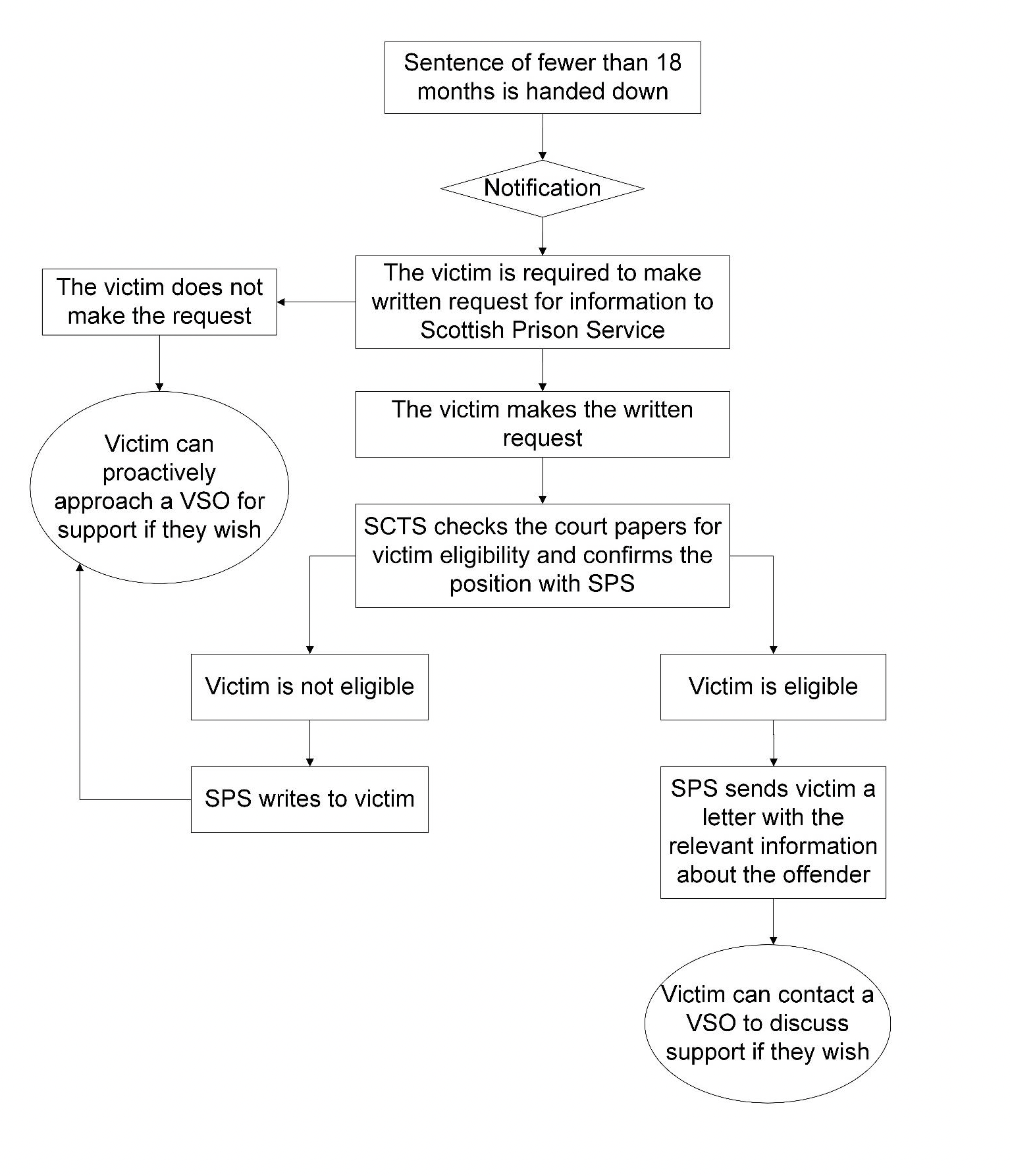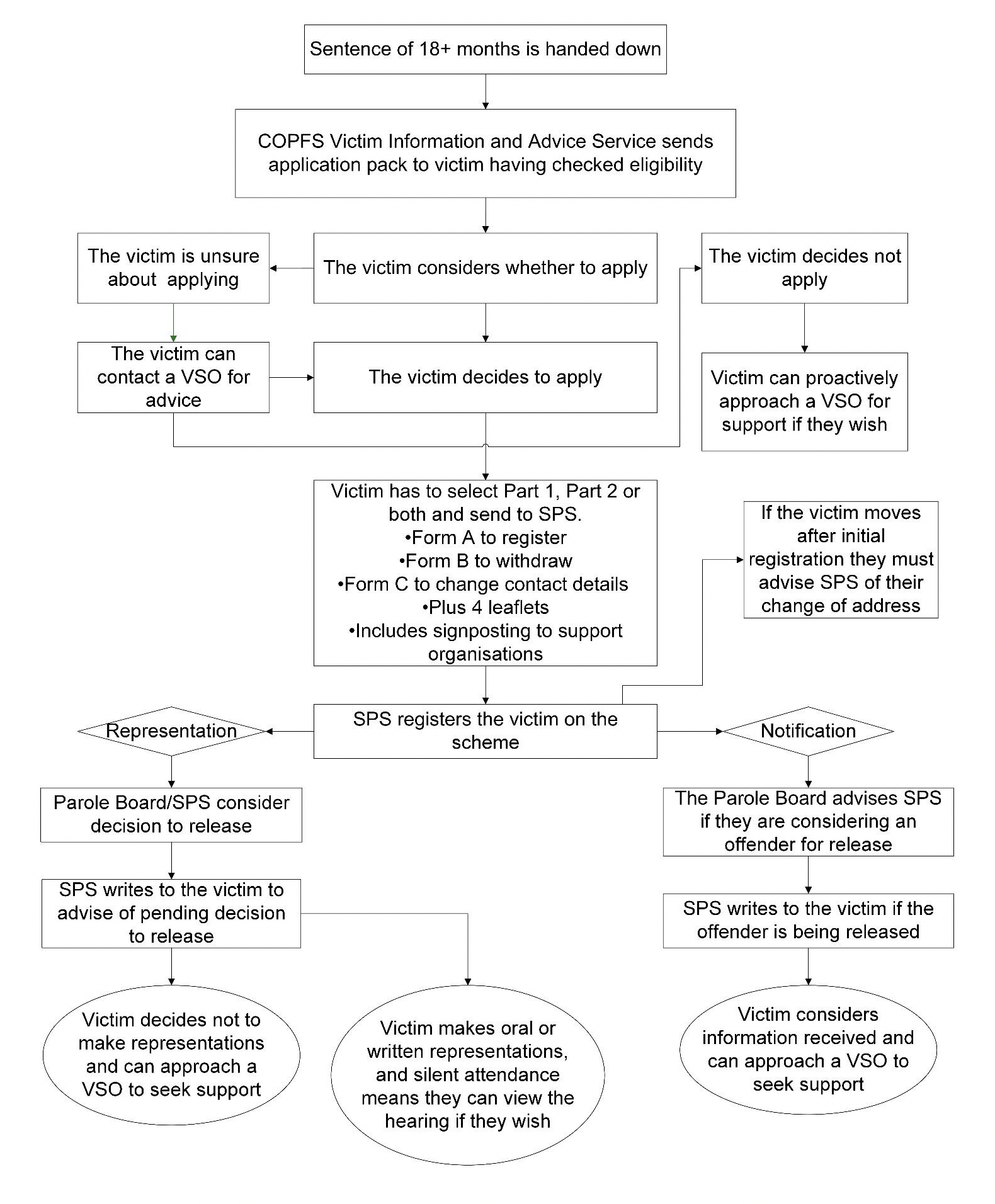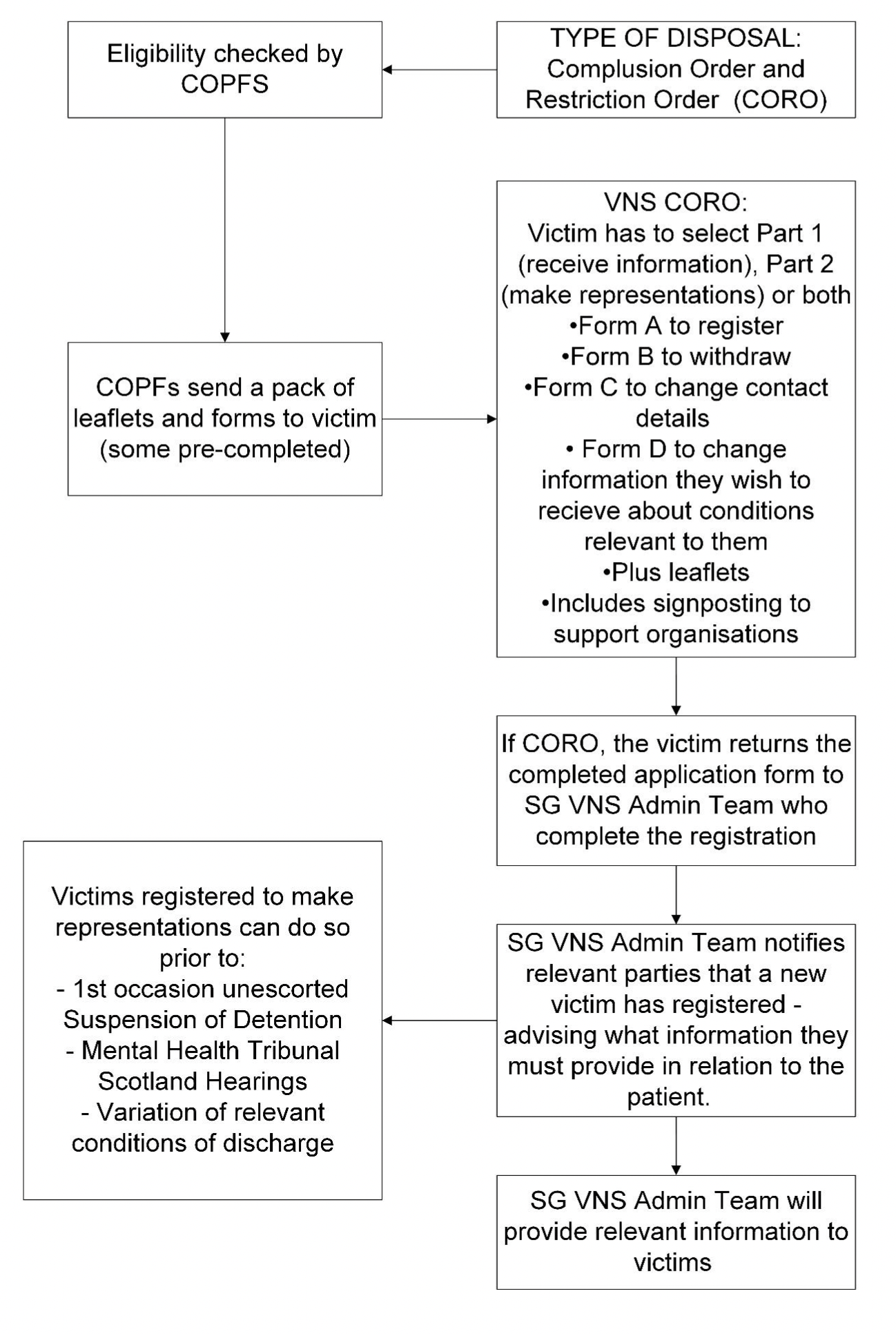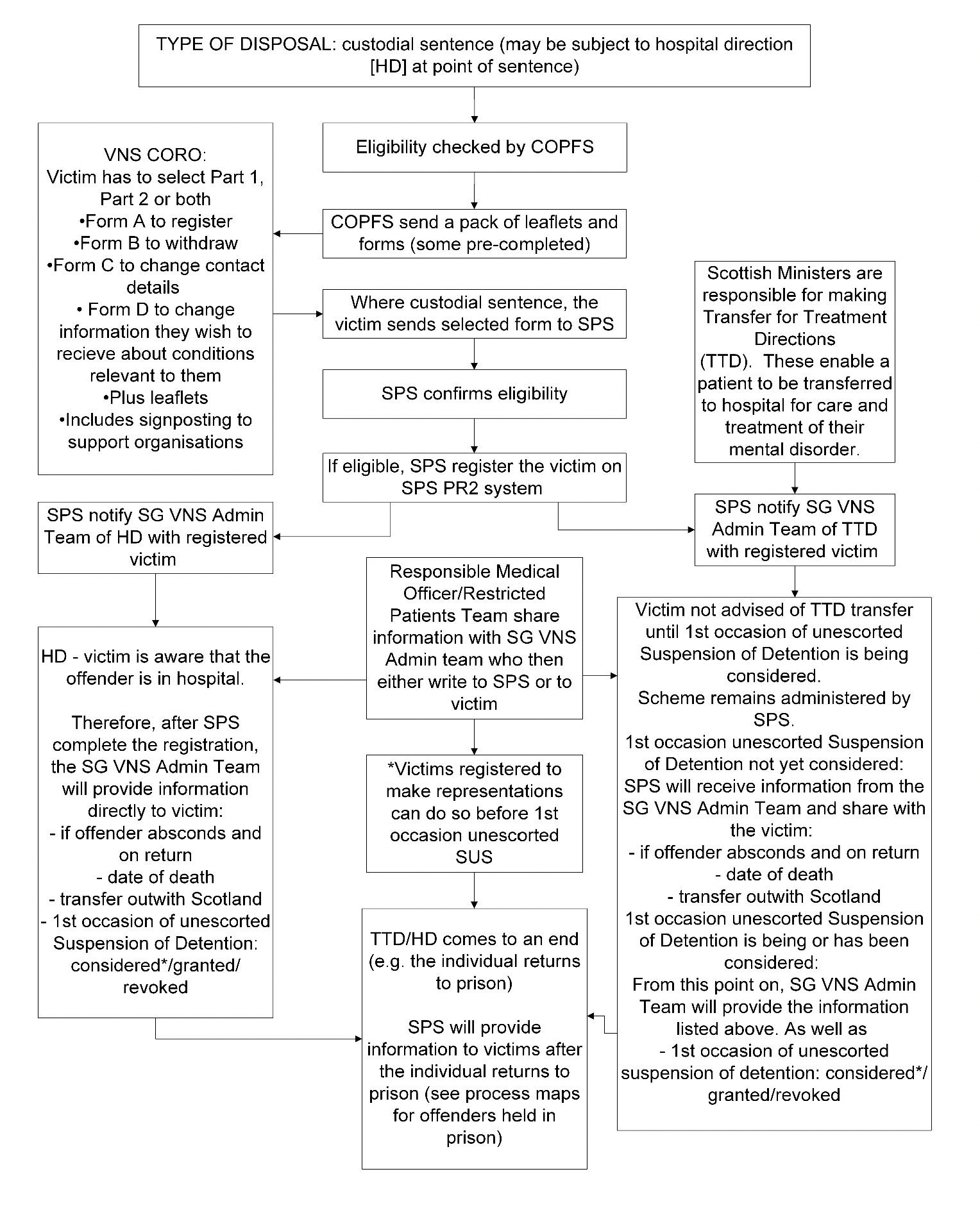Victim Notification Scheme (VNS): independent review
Report of the independent review of the Victim Notification Scheme (VNS). The VNS provides eligible victims information about an offender’s release, and the chance to make representations about parole decisions.
Section 15: Process maps for existing VNS processes
In this section, we have also included a high level process map for the victims of mentally ill offenders subject to CORO. A more detailed process map is attached at Appendix G, which outlines the complexity of the process.




Contact
Email: VNSReview@gov.scot
There is a problem
Thanks for your feedback